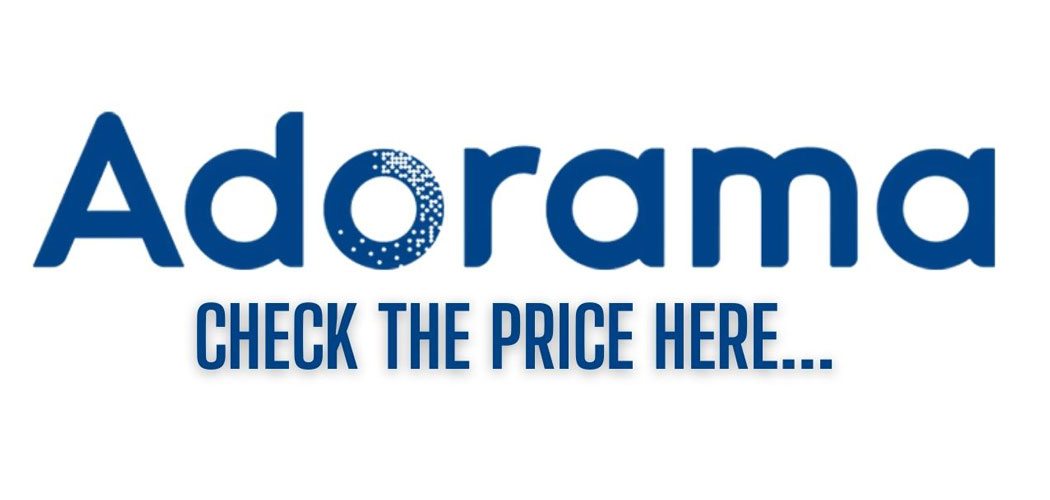Nikon Z6iii review : You’re going to love this
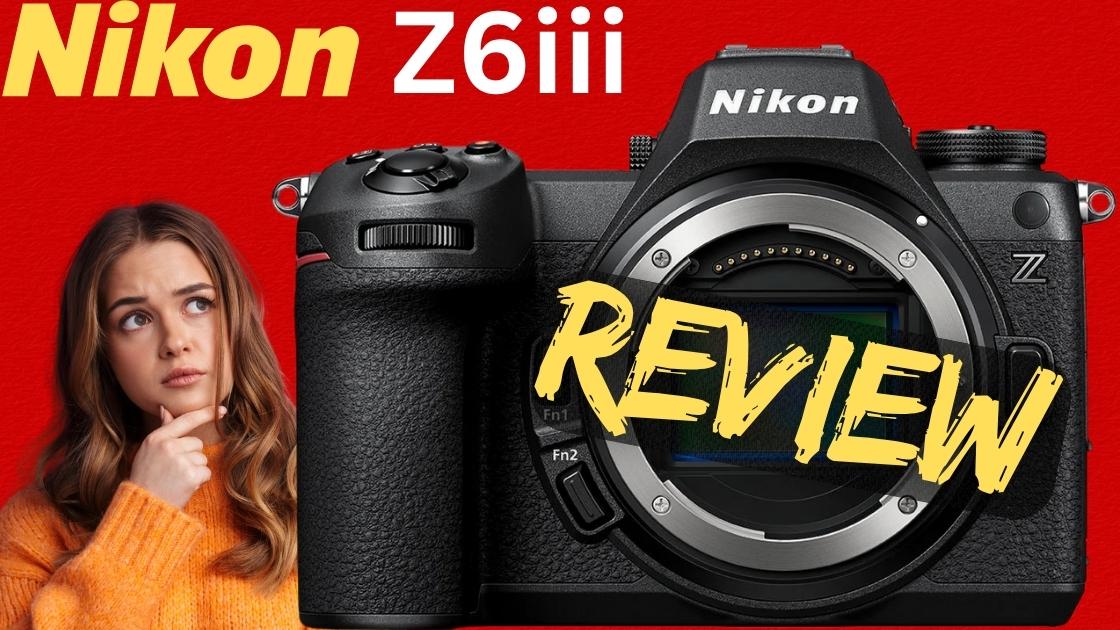
My in-depth Nikon Z6iii Review.
Welcome to my Nikon Z6iii review where I will talk you through my experiences with the Z6iii over the last nine months of use and the pros and cons I have with this amazing camera.
As you can see I have a snippet of my review conclusion below but do read on and discover exactly why I love this camera and why you will too.
Final Verdict: Is the Nikon Z6III Worth It?
“The Nikon Z6iii is one of the most well-balanced full-frame mirrorless cameras on the market today. It combines outstanding image quality, fast and intelligent autofocus and incredible video performance — including 6K/60p N-RAW and 4K/120p options — all in a tough, weather-sealed body.
With its gorgeous bright and detailed EVF, the 3.2″ vari-angle back display and superb 8 stops of in-body stabilization, it’s built for creators who shoot both stills and video at a very high level.
While the price may deter some, its feature set clearly justifies this investment.
For hybrid shooters, content creators and professionals who demand versatility and reliability, the Nikon Z6iii is a true powerhouse and one of Nikon’s best all-round cameras yet.”
Read on to find out more 😉
Table of Contents
Now is a good time to say this Nikon Z6iii review was not sponsored by Nikon and I bough the Z6iii myself. I use the Z6iii regularly in my professional workflow so this is a true real world review from both a photography and videography perspective.
I also have a full Nikon Z6iii review video above if you would prefer to watch that.
Nikon Z6iii Price and is it worth it?
At the time of writing this Nikon Z6iii review the Z6iii was retailing for $2,399.-, so, it’s not a cheap camera but it is incredible value for money when you consider what you’re actually getting.
A partially stacked sensor (more about that later), 6K60p RAW gorgeous video, 14fps burst mode in RAW, an amazing EVF, 8 stops of IBIS, gorgeous colours and superb image quality.
It’s like a baby Nikon Z8 (review here) as the Z6iii is giving you a lot of the Z8 features for nearly half the price so it’s a complete bargain in my eyes.
Now if you want to really deep dive into their differences then check out my Nikon Z8 vs Z6iii review here.
If you want to know the latest Z6iii prices and special offers then check them out below.
Please note these are affiliate links so if you purchase through them I might make a slight commission but it doesn’t cost you anything, so thank you for supporting my channel
Who is the Nikon Z6iii for?
Well, it’s a fantastic camera for hobbyists/enthusiast or professional photographers and videographers but it’s near perfect for hybrid shooters that want a top quality stills and a versatile video camera in one.
I bought the Z6iii as a highly capable carry around camera, to use it for gimbal work and as a back up for my Z8. Crazily my intention was to sell my Z7ii when I bought the Z6iii but I still have that Z7ii and it doesn’t look like I will be selling it anytime soon.
I think the Z6iii is an unbelievable all-rounder and it has to be one of the best hybrid camera’s available in this price range today.
After owning the Z6ii for over two years I can tell you the Z6iii is a completely different animal all together. It’s like the Z6ii on steroids.. its auto focus is miles better, the video quality is another massive jump ahead again and the increase in burst mode frames per second is another nice touch.
So if you are thinking of upgrading from the Z6ii then I would say go for it… The only point I would say to you is don’t expect to see any gains in Dynamic range from the Z6ii as it’s ever so slightly weaker in the Z6iii and that’s due to the partially stacked sensor.
It’s no deal breaker but just something you should know before you buy it.
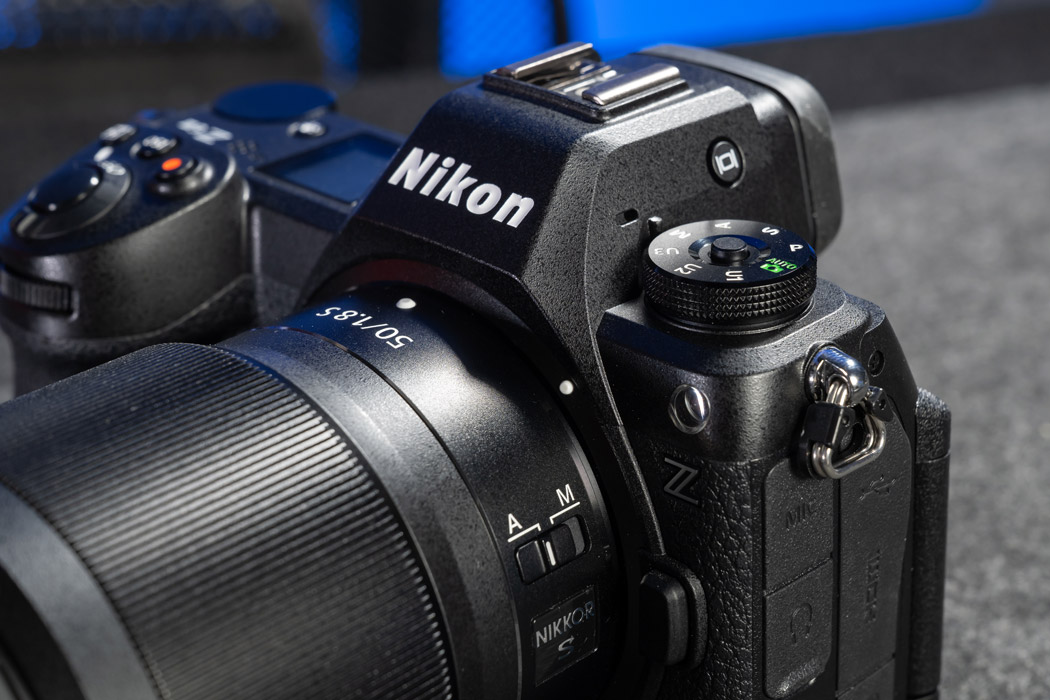
Nikon Z6iii Specifications
| Sensor | 24.5 MP full-frame CMOS, partially-stacked |
|---|---|
| Processor | EXPEED 7 |
| ISO Range | 100–64,000 (expandable) |
| Autofocus System | 493-point phase-detection with 3D tracking & subject recognition (people, animals, vehicles) |
| Continuous Shooting | Up to 120 fps with Pre-Release Capture |
| Video Recording | 6K/60p N-RAW; 4K up to 120p; Full HD up to 240p |
| Stabilization | In-body VR (up to ~8 stops); focus-point VR |
| Viewfinder | 5.76M-dot OLED EVF, DCI-P3, ultra-bright |
| LCD Screen | 3.2″ vari-angle touchscreen |
| Shutter Speed | 1/16,000s (electronic) / 30s–bulb (mechanical) |
| Storage | Dual slots: CFexpress (Type B)/XQD + SD (UHS-II) |
| Connectivity | USB-C, HDMI, Wi-Fi, Bluetooth, Nikon Imaging Cloud |
| Weather Sealing | Yes, rated down to –10 °C (14 °F) |
| Battery | EN-EL15 series (USB charging supported) |
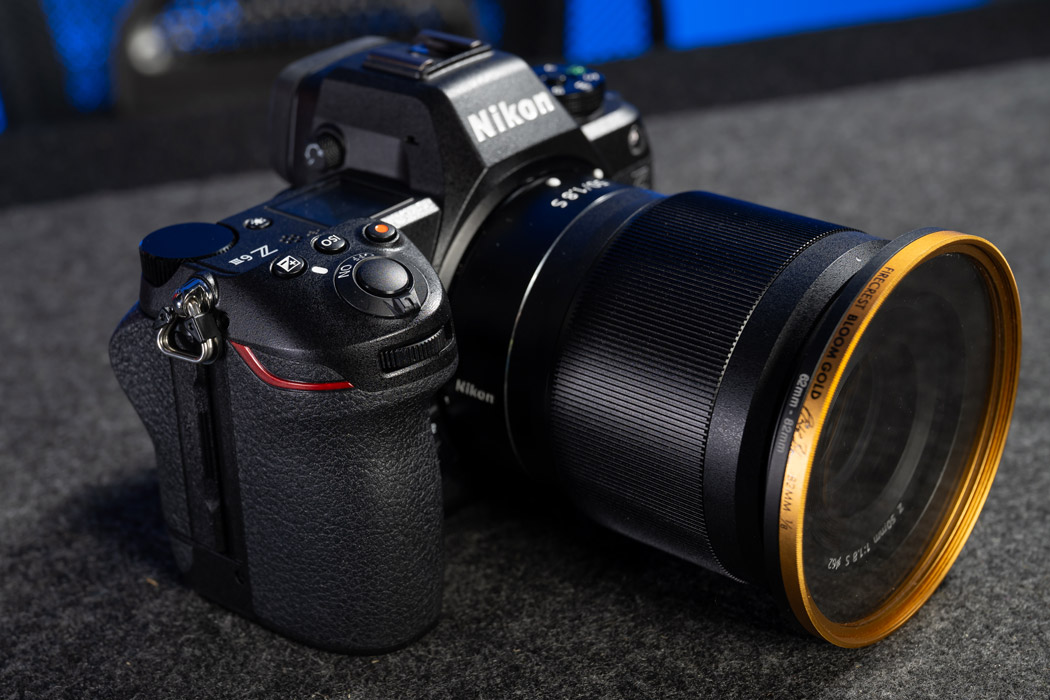
What makes it special?
There are a few things that truly make this camera special for me and the longer I use it the more I apreciate them. I am only going to briefly mention them here now as I have complete sections dedicated to these points further down this review.
- Sensor : The partially stacked sensor which gives us blazing fast sensor read out speeds at a reasonable price.
- EVF : The fabulous EVF, that’s has a 5.76million dot OLED display working at 120hz refresh rate and it’s super bright also.
- Screen : That 3.2″ Vlogging flip around screen.
- Size : Both physical size and grip size have been improved over the Z6ii for me.
- Raw : RAW 6K 12 bit internal video recording.
- IBIS : 8 Stops of IBIS (stabilization).
- Images : Fantastic colours and autofocus.
For me these points are what make the Nikon Z6iii a truly great camera and why I have loved using it, it’s also what makes it unique in the Nikon Lineup. Now these are just some of the reasons why I bought the Z6iii and in all honesty there are several more additional factors that make this great.
Build Quality
The first thing that will strike you about the Z6iii is it’s build quality with its weather sealed magnesium oxide carbon composite body it’s strong and yet still reasonably lightweight. Pairing that great controls, that feel both tactile, positive and robust you get the impression this camera will be around for a long time yet.
It feels like every other pro range Nikon Mirrorless camera I have used… it has that familiar feel to it so it’s easy to use and to transition over to, your muscle memory can just take over. Some of the buttons are in slightly different positions (depending on the camera you are coming from) but the main ones for shooting are in practically the same place.
When it comes to build quality the Z6iii gives a great first impression and that just sticks with you, even nine months later I still can’t fault it.
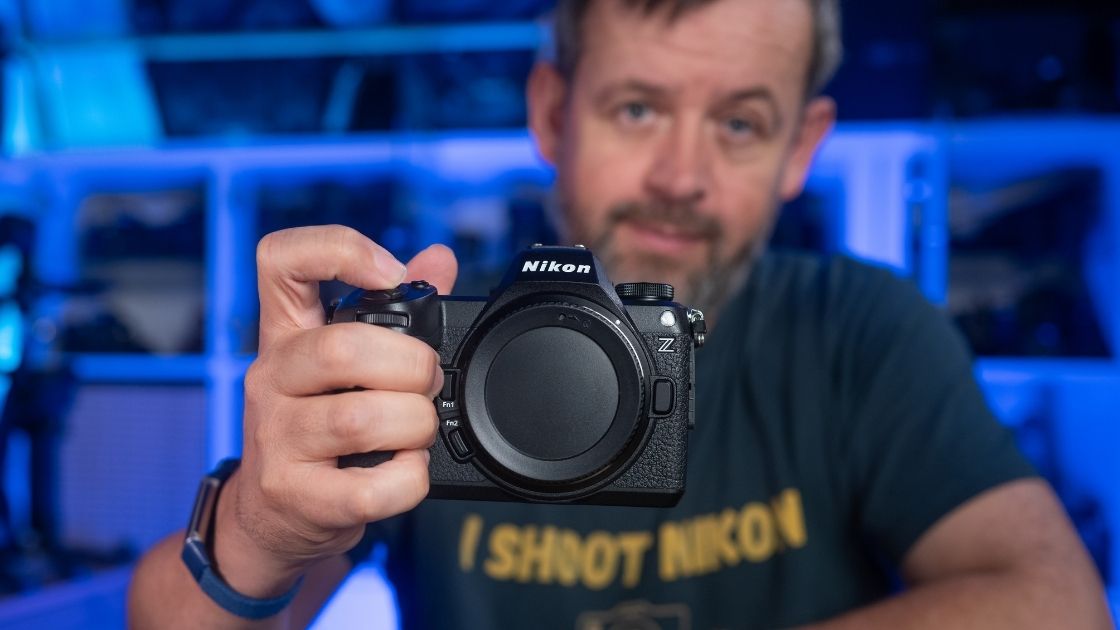
Grip, Size, Weight, EVF, Flip Out Screen and Card Slots.
Grip, Size and Weight
The Nikon Z6iii is taller than the Z6ii so that’s a very welcome addition for me personally as this gives more room on the grip for my hand, this was one of the things I missed about my larger DSLR cameras.
On other mirrorless cameras this smaller grip always made them feel like toys in my hand and my small finger would constantly slip off the bottom of the grip, the grip base would also then dig into the palm of my hand especially when I was shooting with longer lenses.
Thankfully the Z6iii is an improvement here and yes, I know you can always buy a battery grip or an L bracket to help lengthen the grip, if this is an issue for you.
The Nikon Z6iii measures 138.5 x 101.5 x 74 mm (5.5 x 4 x 2.9 inches) so it’s very easy to fit in any camera bag or to carry around with you on the day also. This compact size combined with its feature set make it a wonderful do it all camera.
Weighing just 760 grams it’s a fairly light weight camera especially compared to the Z8 and Z9, so it’s great for travelling, hiking or use on a gimbal. I bought the Z6iii mainly for video and gimbal use but crazily I also use it a lot for photography.
EVF
One of the bigger improvements for me in the Z6iii has to be the new Electronic View Finder or EVF and this is a great improvement.
This new EVF has a 5.6 million dot OLED display that’s pin sharp and is packed with stunning detail, while working at a 120hz refresh rate with practically no latency and 4,000 nits of brightness, that’s just insane.
That’s a huge update for me personally as it’s not only sharper, brighter, has practically no latency but then the 120hz refresh rate make this a pure joy to use and I genuinely think my Nikon Z8 is getting a bit jealous of this EVF.
If you shoot a lot in high fps bursts then there is a slight bit of blackout between shots so it doesn’t have the blackout free delivery of the Z8 and Z9, so do remember that if you are a sports or wildlife shooter. Is it an issue, not really no but it does make it slightly harder to track fast moving subjects.
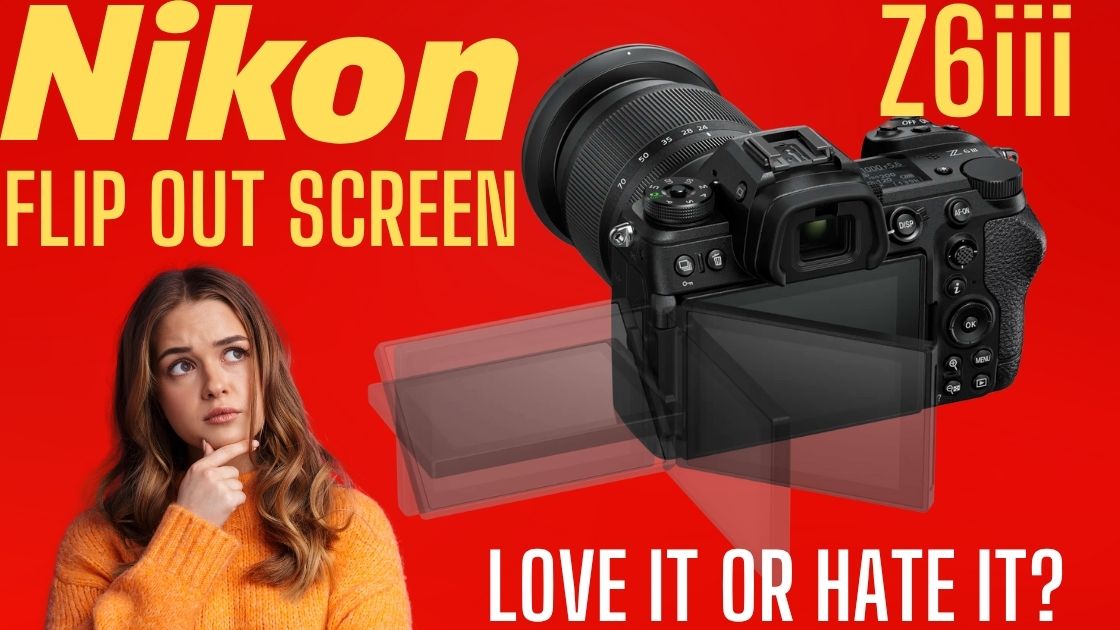
Flip out Screen
With the new fully articulating 3.2” display it’s so easy to view the screen from multiple angles which is great for low angle shots and when you are holding the camera over head, it’s also great for vlogging as you can now see what your filming and confirm your in focus or the camera is still recording 🙂
Now, I waited for this style of screen in a pro Nikon body for years and as soon as I got it I was both delighted and slightly annoyed by it, yes, you guessed it, everything has its pros and cons and this screen is no exception to that rule.
Pros.
You can fully articulate the screen so you can see yourself while vlogging, yes, that’s a huge bonus for some of us.
It works well on gimbals and some shoulder rigs as the gimbal and shoulder rig are now no longer in the way of the screen.
You can turn the screen around fully so the display is facing into the camera body and it’s now protected, that’s handy if you are shooting in wild environments.
Cons.
It’s a pain to simply angle the screen when you have an L bracket fitted, you have to turn it in a specific way to contort it into position and yes that bugs me at times.
It just feels weaker than the more traditional Nikon back displays.
So, you will either love it or hate it and the videographer in me is kind of loving it but the photographer in me is having mixed emotions about it. So you have been warned 🙂
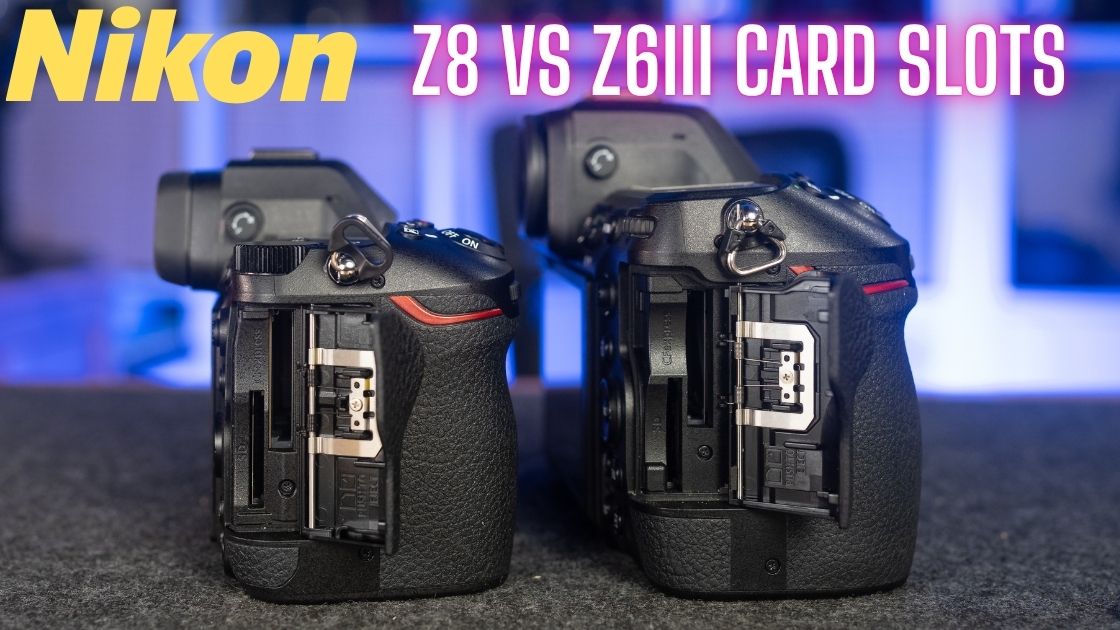
Dual Card slots for redundancy
The Nikon Z6iii has dual card slots in the shape of a UHS II SD card and a CF Express type B (XQD compatible) card slot, that’s great for professional use as you need to have a backup on hand at all times incase a card fails.
I always set my CF Express type B card as my Primary card because of its high data transfer rate and rock solid reliability.
The addition of the CF Express card slot is vital for 6k and 8k NRAW video recording and for the fast burst speeds these cameras are capable of.
Nikon Z6iii Inputs & Outputs
| USB | USB Type-C (SuperSpeed, data transfer & charging support) |
|---|---|
| HDMI | HDMI Type A (full-size) for external monitors/recorders |
| Headphone | 3.5 mm stereo headphone jack for monitoring audio |
| Microphone | 3.5 mm stereo mic input for external microphones |
| Remote Control | Accessory terminal for wired remotes (MC-DC2 compatible) |
| Flash Sync | Hot shoe (supports Nikon Speedlights & wireless flash systems) |
| Wireless | Wi-Fi (2.4/5 GHz) and Bluetooth for image transfer & remote control |
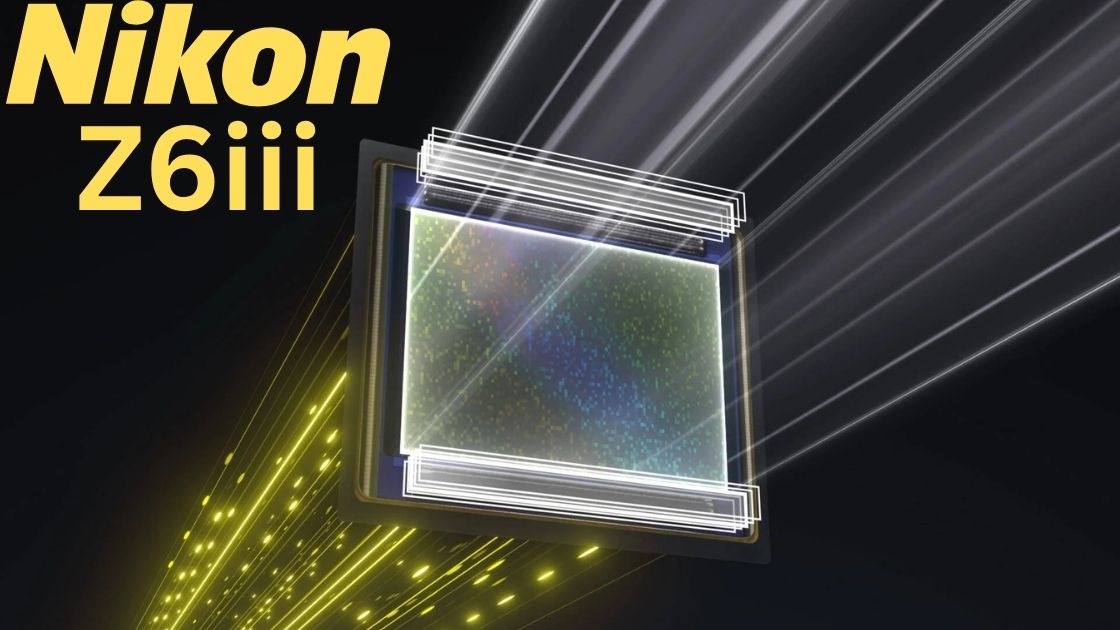
Nikon Z6iii Sensor design
The Nikon Z6iii is the first camera in the world to have a partially stacked sensor, as you can see from the image above the stacked parts are the strips at the top and bottom of the sensor.
These stacked strips help to give the sensor faster readout times so you can then shoot 6k RAW video and oversampled 4K60P with very little (if any) rolling shutter and all at a very reasonable price.
This new design has a fast sensor read time of approx 14ms and while it’s not as fast as a fully stacked sensor like the Z8 and Z9 which are around 3.7ms, it’s still much quicker than the older back-side illuminated sensors which were 50ms and slower.
Partially stacked means that the imaging layer in the stacked section of the sensor is stacked with on-chip memory. This basically allows the camera to read the sensor data extremely quickly.
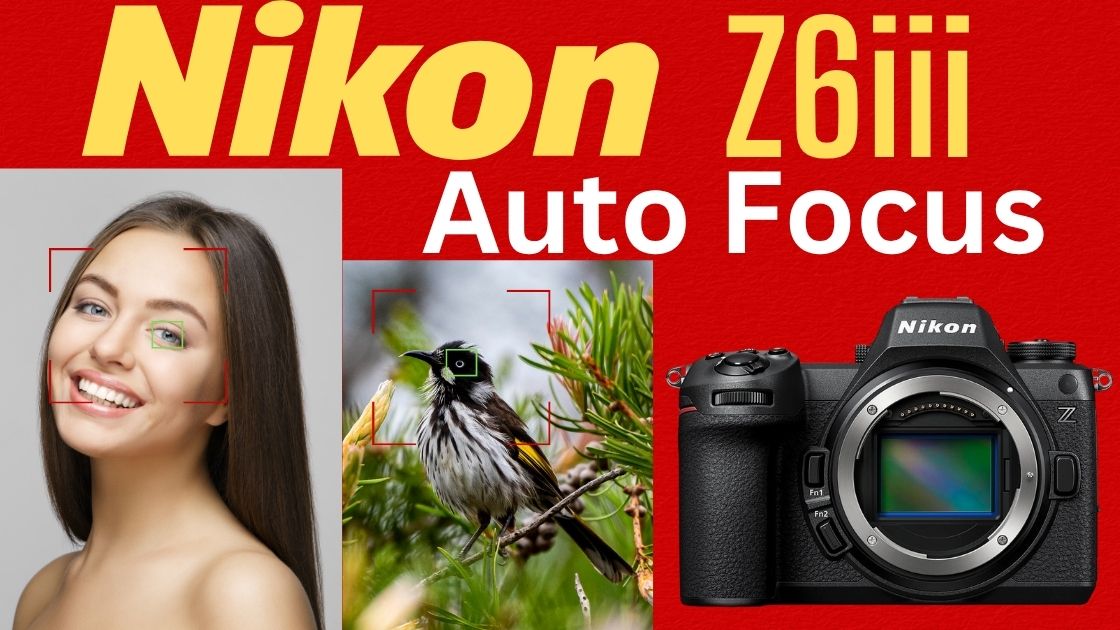
Nikon Z6iii Autofocus
The Nikon Z6iii’s auto focus is really good and I do mean really good, this is mostly due to the EXPEED 7 processor which is the same processor used in the Z8 and Z9, so you are getting near flagship Auto Focus performance in the Z6iii.
The Z6iii though is just like my Nikon Z8, so rest assured the auto focus performance on this camera is fantastic. It’s fast, precise and sticky in 3D tracking, eye AF and all the other subject detection modes just like its bigger brothers.
Now a point to note here is the Auto Focus isn’t exactly the same as the Z8 and Z9’s but it’s so close it’s hardly worth talking about. Again I go into this in more detail in my Nikon Z8 vs Z6iii review.
I have to say though the Z6iii’s Auto Focus is a massive improvement over the older Z6ii’s which was good enough but I did find it struggled in low light situations and it just half as good as the Z6iii for eye AF or subject tracking. So if you are upgrading from the Z6ii this is a big step up.
Burst rates
Ok, so let’s talk about burst mode and the Z6iii can do up to 120 fps per second in Jpeg BUT that’s in DX mode which gives you 10mp images, or it will give you 60FPS in Jpeg at full resolution or 24mp.
In Raw you can get a up to 20fps in electronic shutter mode thanks to the partially stacked sensor. With the mechanical shutter you then get a more average performance of approx 14fps in Raw.
You also have Pre release capture at up to 120fps for up to one second.
This is all of course powered by the Expeed 7 processor…
You can see my full Nikon Z6iii auto focus setup in the video below.
Nikon Z6iii Image Quality (photography).
The Z6iii from a photography perspective is great as it produces lovely vibrant 24mp images with tons of detail and gorgeous skin tones, backed up by good dynamic range and great high ISO performance. So essentially it’s a jack of all trades and excels at everything. But let’s look at all of these aspects in a bit more detail now…
Colouring
The colouring in the Nikon Z6iii is just fantastic and I am loving the tones it produces, straight out of camera they just look really good, so you don’t need to do any serious work to get naturally vibrant images in post processing.
I would definitely put it on par with my Z8 from a naturally pleasing colour perspective and we all know how good the Nikon Z8 and Z9 are.
Again this should be no surprise from a Nikon Professional series camera and this camera lives up to that reputation.
Dynamic Range
Looking at Dynamic range now and as a seascape photographer dynamic range is huge for me and this camera has stops about 10.46 stops of dynamic range which is lower than the Z6ii, Z7ii, Z8 and Z9.
There is still loads of dynamic range for normal use, but if you push your dynamic range to it’s limit normally then the Z6iii might struggle slightly here for you.
The main culprit here has to be the partially stacked sensor, that’s what’s limiting your dynamic range slightly. As a result it’s just not up there with the best as regards dynamic range but this camera offers so much more in other ways.
What all this means is the dynamic range isn’t a problem it’s just not a plus point for this camera.
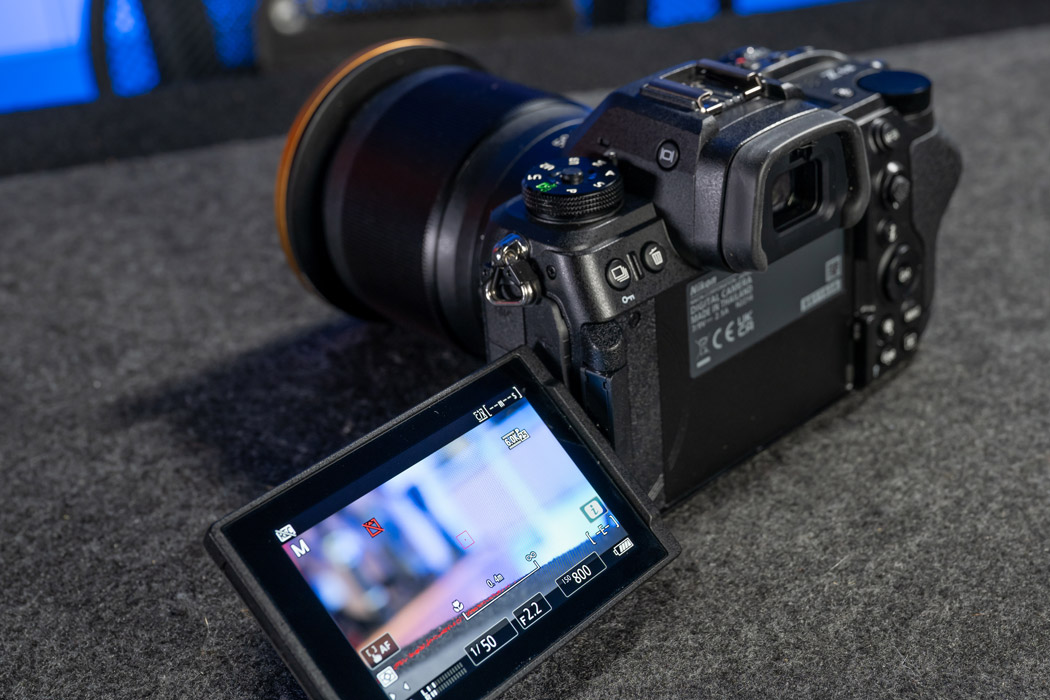
ISO Performance
Looking at High ISO performance now and this camera produces nice clean images even at higher ISO’s so if you shoot in low light conditions that’s a nice bonus. Personally I set my Max Auto ISO for normal use up at ISO 6,400 and the results are great.
Using higher ISO’s is no issue either but we all have different tolerances to ISO noise and for safe use I set mine to 6,400.
Shooting Astro or using this camera in very low light situations is no problem either as results at up to ISO 25,600 are very respectable and with it’s ISO reaching up to ISO 64,000 and beyond in the Extended range the Z6iii has you covered.
It’s standard base ISO is ISO100 and it second base ISO is ISO800 as this camera has a dual base or native ISO.
From an image quality perspective the Nikon Z6iii is amazing… Dynamic range being the only very slight mark on it’s near perfect score card so far and again it’s not an issue but just something to know before you buy it.
Every camera has its uses and pros and cons, hence why I have three working cameras here that I use regularly, we won’t talk about the retired models 🙂
IBIS
Another big positive for the Z6iii is that it has 8 stops of In Body Image Stabilisation or IBIS just like the Nikon ZF (review here). Yes, that’s right the Z6iii has 8 whole stops when used with a compatible Nikon lens whereas the Z8 and Z9 only have 5.5 stops.
This is great for people shooting handheld with longer lenses or shooting in lower light conditions as we can use far slower shutter speeds.
To highlight how much of a difference this makes with the Z8 you might be able to go to 1/60th of a second before you create motion blur due to camera movement. With the Z6iii you can go to 1/13th of a second before you create motion blur like you did with the Z8.
That’s giving you nearly 2.5 stops more light as a result, which is a big deal.
Now a point to note here is the Nikon ZF’s sensor never locks in place so it kind of rattles when the camera is switched off. The Z6iii doesn’t have this rattle as the sensor is parked when powered off.
User profiles
The Nikon Z6iii has 3 different User settings which are bit like the memory banks you have in the Z8 and Z9. You can have these User Settings setup for different genres of photography, so you can quickly switch fromm one mode to the next.
Personally, I set U3 to the factory default basic settings so I can just hand the camera to someone and they can actually use it, without knowing about back button focus or anything like that, it’s just on Auto.
The other two settings U1 and U2 as I have them setup for landscapes and portraits so I can super quickly pop from one to the other, so I never miss a shot again.
You can of course set to them whatever suits you and your style of photography. So you just have to flick that dial and off you go.
Pixel Shift
The Z6iii has pixel shift technology built-in which gives us the option of capturing images up to 96mp in size from our 24mp camera.
This is done by the sensor moving position while capturing the burst of images and you can then stack all these images together in post processing to create this huge 96 mega pixel image.
Nikon Z6iii Video Recording Formats, Resolutions & Codecs
| Resolution / Frame Rate | Codec / Format | Bit Depth / Color | Notes |
|---|---|---|---|
| 6K (5376×3024) up to 60p | N-RAW (.NEV) | 12-bit RAW | Full-sensor readout; records 1080p H.264 proxy MP4 simultaneously |
| 6K (5376×3024) up to 60p | ProRes RAW HQ (MOV) | 12-bit RAW | High-end RAW option; includes proxy MP4 recording |
| 5.4K (approx. 5376×3024) up to 60p | ProRes 422 HQ (MOV) | 10-bit 4:2:2 | All-Intra compression; ideal for post-production workflows |
| 4K UHD (3840×2160) up to 120p | H.265 (MOV) | 10-bit 4:2:0 | Oversampled from 6K sensor area; slight crop at 100/120p |
| 4K UHD (3840×2160) up to 60p | H.265 (MOV) | 8-bit or 10-bit | Supports N-Log, HLG, or SDR gamma profiles |
| 4K UHD (3840×2160) up to 60p | H.264 (MP4) | 8-bit 4:2:0 | Smaller file sizes; broad compatibility |
| Full HD 1080p up to 240p | H.265 / H.264 (MOV / MP4) | 8-bit / 10-bit | High-speed slow-motion recording; sound disabled in slo-mo mode |
Audio & File Details
- N-RAW / ProRes RAW HQ / ProRes 422 HQ: Linear PCM 48 kHz 24-bit audio
- H.265 / H.264 (MOV / MP4): Linear PCM or AAC 48 kHz 16-bit audio (depending on mode)
- Proxy recording: 1920×1080 H.264 MP4 (8-bit) is generated alongside RAW files for quick playback
Frame rates include: 23.98p / 24p / 25p / 29.97p / 50p / 59.94p / 100p / 119.88p depending on mode and region.
I have a few videos below on how I setup my Nikon Z6iii for video use which might help a bit.
Videography
From a videography perspective the Nikon Z6iii is jaw droppingly good for a few different reasons, firstly it’s Internal 12 bit raw recording at up to 6K 60p is insane. Then we have gorgeous oversampled 4K60P which is crazy when you consider the price of this camera.
6K is incredibly handy for me personally as I tend to use the added resolution for cropping in post or creating a small bit of movement in talking head videos while still giving a full 4K output.
I will be adding to this videography section over the coming weeks…
The range of codecs and recording resolutions are listed above.
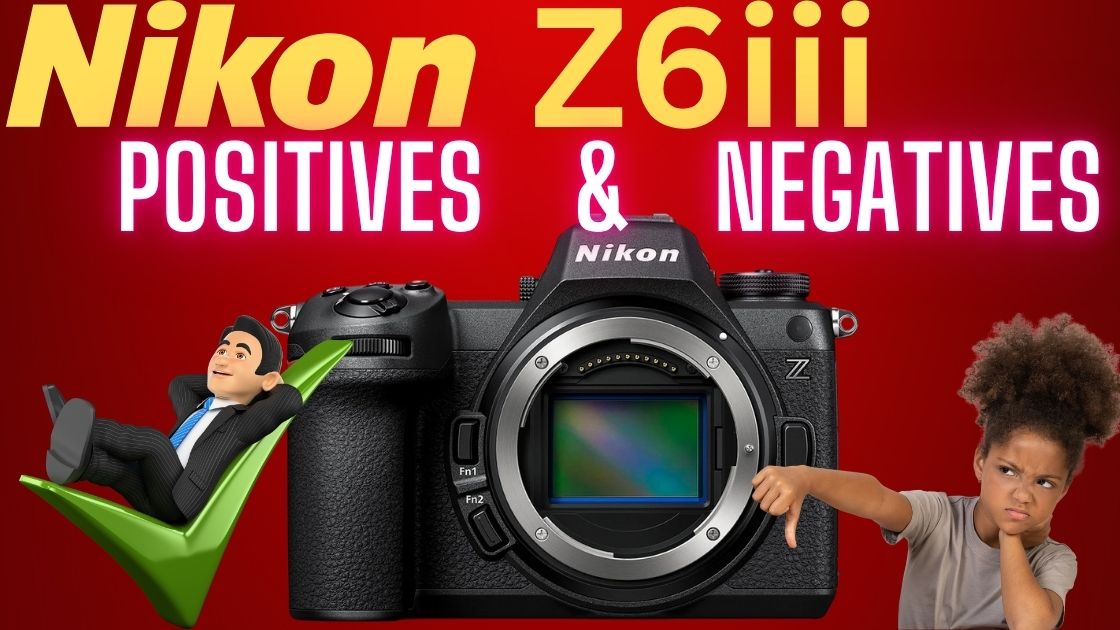
Nikon Z6iii Pros & Cons
| Pros | Cons |
|---|---|
|
|
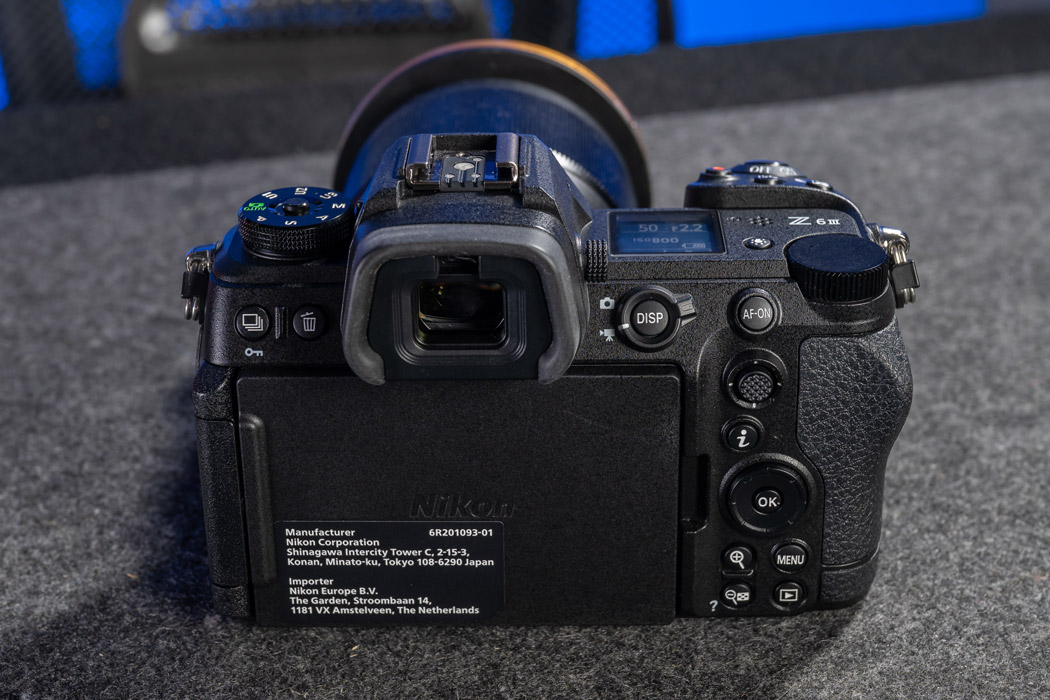
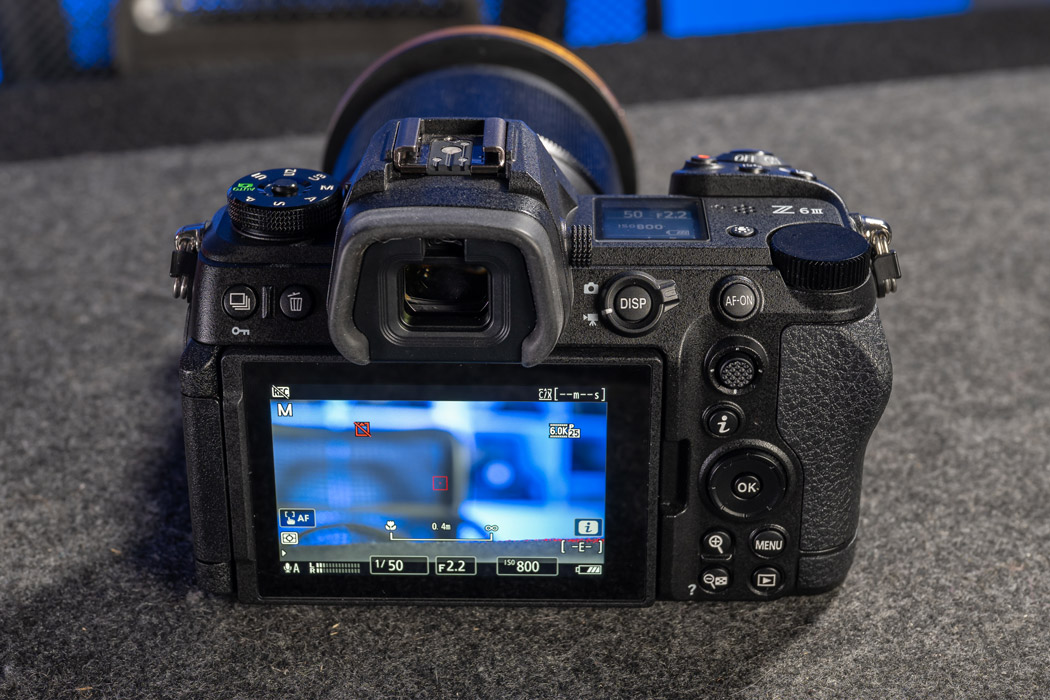
Review conclusion.
The Nikon Z6iii is a fantastic all-around camera that excels in both photography and video. Its balance of image quality, autofocus performance, and video features make it an excellent choice for professional creators who need a reliable tool for diverse shooting situations.
While there are a few drawbacks, such as the lack of built-in flash and limited 4K slow-motion options, these are minor compared to the camera’s overall performance. The Z6 III is undoubtedly a worthy contender in the hybrid camera market, and Nikon has crafted a solid option for professionals in both photography and videography fields.
So, it’s review conclusion time and yes you guessed it I love the Nikon Z6iii, that’s why I bought it, it’s a fantastic camera gorgeous colouring, sharp crisp imagery, great focusing, 120 fps stills, 8 stops of VR, gorgeous screen and EVF and 6k internal raw recording to name just a few of its pro’s and all of this for a fairly reasonable price.
With it’s only cons being no inbuilt flash which is nearly standard now and a slight weaker dynamic range but it is only slightly weaker.
I am loving this camera so far and I think it’s a perfect partner for my Z8 what do you think of the Z6iii, is there something missing from it? The only way I could improve this camera would to make it 33 or 36mp for stills now that would be one great camera then. Is that the Z6iv maybe?
I am now left with one big problem and that’s what do I do with my Z7iii now? Should I sell it or keep it? What would you do?
Anyway thanks again for reading my Nikon Z6iii review and I hope it helped you figure out if this camera is right for you or not.
See you out there,
Kieran.
The Nikon Z6iii has generated a lot of excitement among hybrid shooters and professionals alike. Below, I have answered some of the most frequently asked questions about its video performance, autofocus system, image quality and key features. Whether you’re upgrading from the Z6 II or exploring your first full-frame mirrorless camera, this Nikon Z6iii FAQ will help you understand exactly what it offers — and why it stands out in Nikon’s lineup.
Frequently Asked Question
Nikon Z6iii review : You're going to love this camera
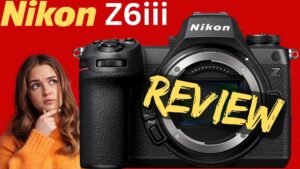
Welcome to my Nikon Z6iii review where I will talk you through my experiences with the Z6iii over the last nine months of use and the pros and cons I have with this amazing camera.
4.8
Pros
- 6K60P RAW recording
- Stunning colour reproduction
- Great Price
- 8 stops of IBIS
Cons
- Dynamic range fractionally weaker than the Z6ii
